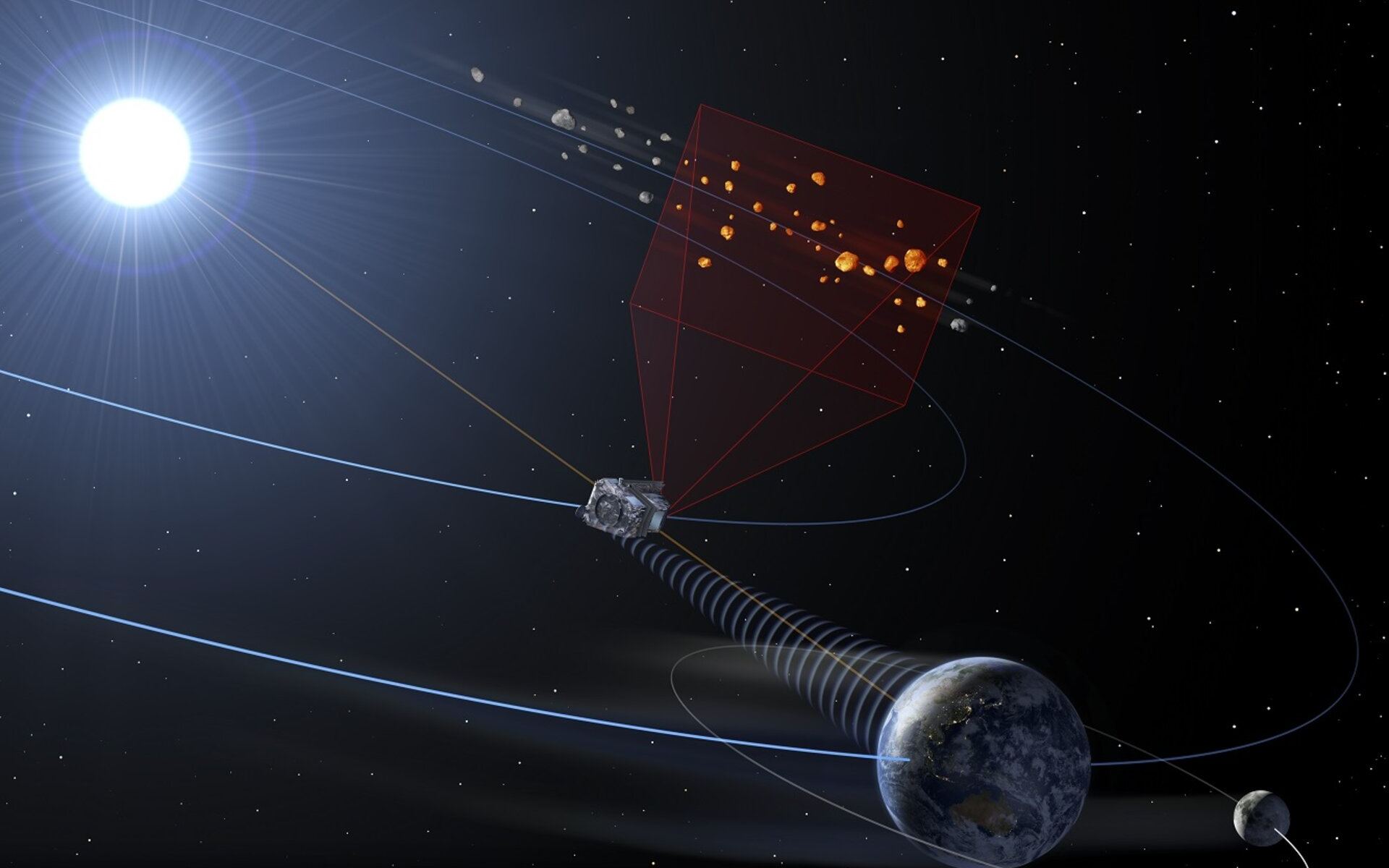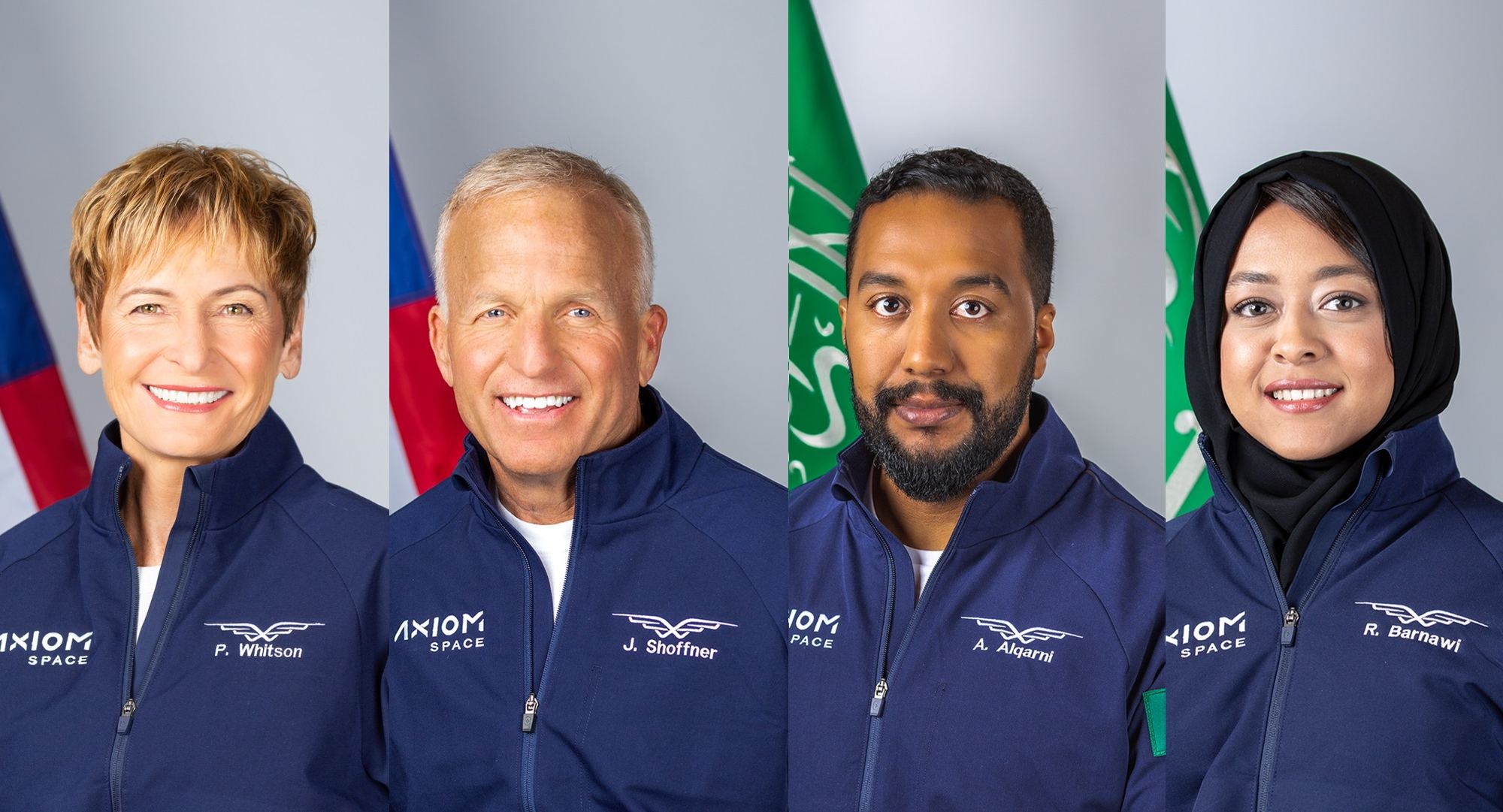International work on near-Earth asteroid detection systems is again ramping up as, coincidentally, a very small asteroid caused a stir in northern Europe and the UK.
2023 CX1 (originally known as Star2667 prior to its impact) was broadly similar in nature to the type of object such systems would attempt to seek out, in that it was entirely unknown to astronomers the world over until a mere seven hours before it entered Earth’s atmosphere on February 13th, 2023. Fortunately, it was small enough and light enough – estimated to be around 1 metre across its largest dimension and weighing about 1 kilogramme – to pose no direct threat, although its demise was seen from France, the southern UK, Belgium, The Netherlands and northern Spain.
Thus far, over 30,600 asteroids and comets of various classes have been identified as having some risk of striking Earth’s atmosphere, with around 8% know to be of a size (+100m across) large enough to result in significant regional damage should it to so. However, even asteroids and comet fragments of just 20-40m across could cause considerable damage / loss of life were one to explode in the atmosphere over a population centre, whilst the total number of potential threats remains unknown.
A major problem in identifying these objects from Earth’s surface using visual or infra-red means is that the Sun tends to sharply limit where and when we can look for them, whilst radar has to be able to work around 150,000 satellites and all debris and junk we have put in orbit (excluding military satellites and “constellations” of small satellites such as SpaceX Starlink and OneWeb).
To bypass such problems, the European Space Agency plans to deploy NEOMIR, the Near-Earth Object Mission in the Infra-Red, a spacecraft carrying a compact telescope and placed at the L1 Lagrange point between Earth and the Sun (where the gravitational attraction of the two essentially “cancel each other out”, making it easier for a craft occupying the region to maintain its position). From here, Earth and the space around it would be in perpetual sunlight and the Sun would be “behind” the satellite, meaning that any objects in orbit around Earth or passing close to it will also be warmed by the Sun (and so visible in the infra-red), whilst sunlight would not be able to “blind” the satellite’s ability to see them.

The half-metre telescope carried by NEOMIR will be able to identify asteroids as small as 20m in size, and would generally be able to provide a minimum of 3 weeks notice of a potential impact with Earth’s atmosphere for objects of that size (although under very specific edge-cases the warning could be as little as 3 days), with significantly longer periods of warning for larger objects.
Currently, NEOMIR is in the design review phase, and if all goes well, it will be launched in 2030. In doing so, it will help plug a “gap” in plans to address the threat of NEO collisions with Earth: NASA’s NEO Surveyor mission, planned for launch in 2026, will also operate from the L1 position – but is only designed to spot and track objects in excess of 140m in diameter. Thus, NEOMIR and NEO Surveyor will between them provide more complete coverage.
At the same time as an update on NEOMIR’s development was made, China announced construction of its Earth-based Fuyan (“faceted eye”, but generally referred to as the “China Compound Eye”) radar system for detecting potential asteroid threats is entering a new phase of development.
The first phase of the system – comprising four purpose-built 16m diameter radar dishes – was completed in December 2022 within the Chongqing district of south-west China. Since then, the system has been pinging signals off of the Moon to verify the system and its key technologies.

The new phase of work will see the construction of 25 radar dishes of 30m diameter, arranged in a grid. When they enter service in 2025, they will work in concert to try to detect asteroids from around 20-30m across at distances of up to 10 million km from Earth, determining their orbit, composition, rotational speed, and calculate possible deflections required to ensure any on a collision course with Earth do not actually strike the atmosphere.
As this second phase of Fuyan is commissioned, a third phase of the network will be constructed to extend detection range out to 150 million km beyond Earth. At the same time, China is planning to run its own asteroid deflection test similar to the NASA Double Asteroid Redirection Test mission, although the precise timeline for this mission is not clear.

In the meantime, 2023 CX1 was of the common type of near-Earth asteroids to regularly strike Earth’s atmosphere (at the rate of one impact every other week). It was discovered by Hungarian astronomer Krisztián Sárneczky, at Konkoly Observatory’s Piszkéstető Station within the Mátra Mountains, less than 7 hours before impact.
At the time of its discovery it was 233,000 km from Earth (some 60% of the average distance between Earth and the Moon), and travelling at a velocity 9 km per second. It took Sárneczky a further hour to confirm it would collide with Earth, marking 2023 CX1 as only the 7th asteroid determined to be on a collision with Earth prior to its actual impact.

The object – at that time still designated Star2667 – was tracked by multiple centres following Sárneczky’s initial alert, allowing for its potential entry into and passage through the upper atmosphere to be identified as being along the line of the English Channel, close to the coast of Normandy. It was successfully tracked until it entered Earth’s shadow at around 02:50 UTC on February 13th, just 9 minutes before it entered the upper atmosphere
As both the media and public were alerted to the asteroid’s approach, it’s demise was caught on camera from both sides of the English channel. It entered the atmosphere at 14.5 km/s at an inclination 40–50° relative to the vertical. As atmospheric drag increased, it started to burn up at an altitude of 89 km, becoming a visible meteor. At 29 km altitude it started to fragment, completely breaking apart at 28 km altitude as a bright flash as its fragments vaporised, finally vanishing from view at 20 km altitude, although meteorites fell to Earth in a strewn field spanning Dieppe to Doudeville on the French coast, sparking a hunt for fragments to enable characterisation of the object.
At the time of flash-fragmentation, the object released sufficient kinetic energy to generate a shock wave which was heard by people along the French coast closest to the path of the meteor and recorded by French seismographs.
Following its impact, study of 2023 CX1 s orbital track revealed it to be an Apollo-type asteroid, crossing the orbits of Earth and Mars whilst orbiting the Sun at an average distance of 1.63 AU with a period 2.08 years. It last reached perihelion on 13th February 2021, ad would have done so again on March 15th, 2023 had it not swung into a collision path with Earth in the interim.
ISS Updates
Russia Pulls Progress MS-21 from ISS, Prepares Soyuz MS-23 for Launch
The Russian MS-21 re-supply vehicle (Progress 82 in NASA parlance) departed the International Space Station on February 18th, in order to make way for the upcoming launch of the uncrewed Soyuz MS-23 mission intended to be the “rescue vehicle” for cosmonauts Sergey Prokopyev and Dmitri Petelin and NASA astronaut Frank Rubio.
MS-21 suffered a coolant leak on February 11th, making it the second Russian vehicle docked at the ISS to suffer such a leak in under two months – the first being with the Soyuz MS-22 which originally carried Prokopyev, Petelin and Rubio to the ISS. That leak has been blamed on a micrometeoroid impact – and evidence appears to support that; however, the Progress MS-21 incident has raised concerns about the overall condition of the Soyuz / Progress fleet (the two vehicles are of pretty much the same basic design), particularly given both craft suffered their leaks after roughly the same time in orbit (80-85 days).

The Progress vehicle had been slated to depart ISS on February 17th, but this was delayed 24 hours to allow time for additional images and video to be taken of the area of the vehicle where the leak was believed to have occurred (the Progress leak was not as spectacular as that of the Soyuz) in the hope that the cause might be identified.
Initial analysis by both NASA and Roscosmos of the images and video gathered did not reveal an immediate cause for the leak, although it was noted it appears to have occurred close to the vehicle’s external autonomous avionics systems, used to control the vehicle whilst flying under its own power, but neither agency believe the craft’s ability to make a controlled de-orbit has been compromised.
Meanwhile, as a result of Progress leak, the planned launch of Soyuz MS-23 as an uncrewed “rescue craft”, originally scheduled for February 20th, has been pushed back to March in order to allow engineers more time to investigate both the MS-21 and Progress leaks. It is also unclear how long MS-23 will remain at the space station. Roscosmos had originally stated Prokopyev, Petelin and Rubio would have to remain on the ISS for up to a further 6 months prior to using MS-23 to return to Earth; however, this might now be shortened in light of the two coolant leaks.
Starliner On Schedule for April Crew Flight Test
In brighter news for NASA, preparations for the long-awaited (and delayed) Boeing CST-100 Starliner crew flight test (CFT) remain on-course for a mid-to-late April launch.
The mission will send NASA astronauts Butch Wilmore and Suni Williams to the ISS on a eight day mission, and the flight is the final step in certifying the vehicle as being ready to start ferrying crews between US soil and the ISS alongside of SpaceX Crew Dragon.

Starliner has been beset with issues – not unusual for an entirely new space vehicle – one of which prevented it from being able to reach and dock with the ISS during the first uncrewed Orbital Flight Test (OFT) in December 2019, requiring extensive software and system updates. A second OFT was originally scheduled for November 2020, but pad-side issues meant this did not take place until May 2022.
Should the April launch date slip, it is unclear when the attempt might be made; the next Crew Dragon mission – Crew 6 – is due for launch on February 26th, and while Crew 5 is due to return to Earth in March, its “parking space” at the station is due to be taken by the Axiom 2 mission (Ax-2) in May, leaving Starliner with a limited window in which to complete its CFT. ULA, the provider of the Starliner launch vehicle provider, is also gearing up for the first launch of their new Vulcan Centaur rocket, limiting time they can devote to the Atlas 5 booster if the Starliner launch is delayed.
Ax-2 Crew Fully Announced
As noted above, Axiom Space is preparing for its second private mission to the ISS as it continues with plans to develop its own space station using ISS as a springboard. The first such “all private” mission by the company was flown in April 2022, and the first two members of the AX-2 crew were announced shortly after that mission; however, a formal announcement on the entire crew had to wait for official clearance.

Leading the crew will be NASA veteran Peggy Whitson, who entered the history books as the first female commander of an ISS crew rotation. She also currently holds the records for the woman who has accumulated the most time in space, and the American with the most time in orbit – 665 days across multiple missions.
During her career, Whitson also served as NASA Chief of the Astronaut Office between 2009-2012 before returning to flight status and completing two tours as an ISS mission commander, during which she also completed two further space walks to also set a record for the most EVAs thus far completed by a woman – 10 in all. Following her final crew rotation in 2017, she retired from NASA 2018, joined Axiom Space in a consultancy capacity, prior to becoming their Director of Human Space Flight in 2021.
Whitson will be joined by John Shoffner, a Tennessee business executive, race car driver and aviator who will serve as the mission’s pilot, and Saudis Ali AlQarni and Rayyannah Barnawi, both of whom are members of the Saudi national astronaut programme. They will become the 2nd and 3rd Saudi nationals to fly in space after Sultan bin Salman Al Saud, who flew on the space shuttle Discovery in 1985.
It is unclear how much Saudi Arabia has paid for the two seats on Ax-2, however, the 3 American businessmen who made up three quarters of the Ax-1 crew in 2022 are said to have paid Axiom US $55 million each for their places on that flight, and Shoffner is said to have paid around the same amount.

Ax-2 is expected to remain at the ISS for 14 days.